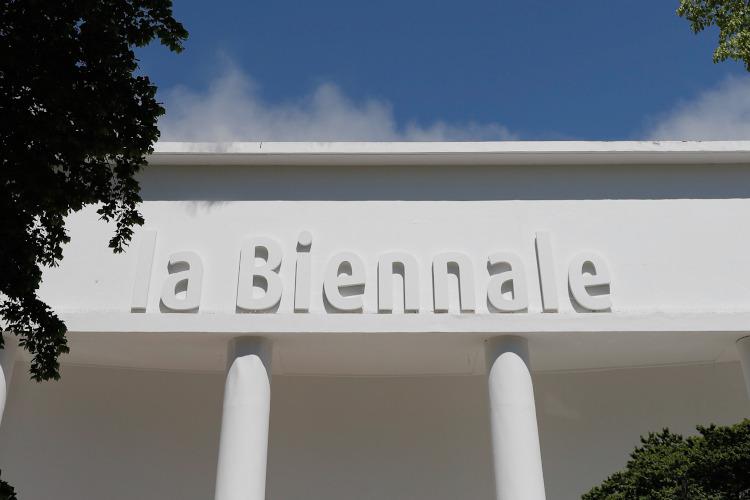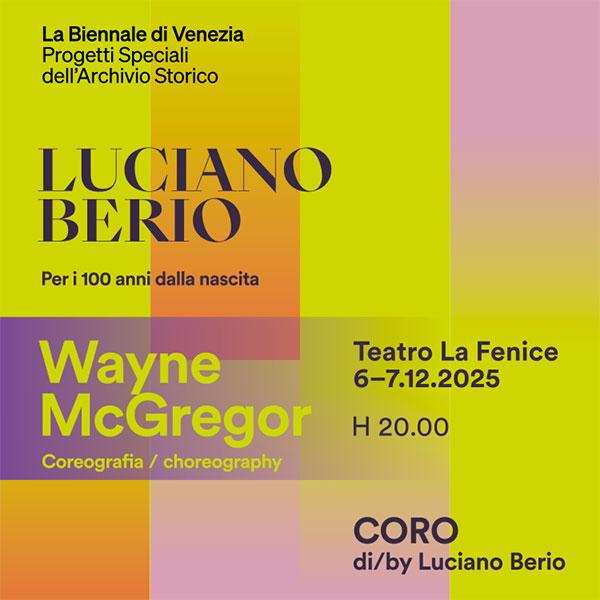An exhibition realised by the Historical Archives of Contemporary Arts - ASAC and curated for the first time by the artistic directors of all six departments (Art, Architecture, Cinema, Dance, Music, and Theatre) with the cooperation of Istituto Luce-Cinecittà, Rai Teche and other Italian and international archives.

The Disquieted Muses: An exhibition at the Central Pavilion
The exhibition marked the 125th anniversary of the La Biennale di Venezia. Contents will be available in the catalogue to be published shortly.
The Disquieted Muses.
When La Biennale di Venezia Meets History
La Biennale di Venezia, to mark the 125th anniversary of its foundation, presents Le muse inquiete (The Disquieted Muses). When La Biennale di Venezia Meets History, an exhibition by the Historical Archives of Contemporary Arts – ASAC, held in the Central Pavilion of the Giardini della Biennale from Saturday, August 29 to Tuesday, December 8, 2020.
NOTE: the exhibition was closed on November 5, 2020 in accordance with the Italian Government’s measures to contain the coronavirus pandemic.
This is the first exhibition to be curated by all the artistic directors of La Biennale’s six departments. Working together, they have used the one-of-a-kind sources of the Historical Archives of La Biennale and other Italian and international archives to retrace key moments during the 20th century when the Biennale crossed paths with history in Venice.
Cecilia Alemani (Art), Alberto Barbera (Cinema), Marie Chouinard (Dance), Ivan Fedele (Music), Antonio Latella (Theatre), and Hashim Sarkis (Architecture) have drawn on the materials of the ASAC, Istituto Luce-Cinecittà and Rai Teche, but also on the records of the Galleria Nazionale Arte Moderna di Roma, Fondazione Modena Arti Visive, Archivio Ugo Mulas, Aamod-Fondazione archivio audiovisivo del movimento operaio e democratico, Archivio Cameraphoto Arte Venezia, IVESER Istituto Veneziano per la Storia della Resistenza e della società contemporanea, Peggy Guggenheim Collection, Fondazione Ugo e Olga Levi, Centro Sperimentale di Cinematografia Roma, and Tate Modern London.
In presenting the exhibition, Roberto Cicutto, President of La Biennale di Venezia, expressed his gratitude “for the generous support that the directors and staff of the Historical Archives and the entire Biennale have given to this project, parallel to their work on the exhibitions and festivals. It is one that bolsters La Biennale’s role as a hub of research in the contemporary arts, a fundamental driving force for investigating the present and future, and a strategic tool for development, even in terms of economic growth.”
For this exhibition, the directors have selected rare footage, first-hand accounts, and a range of artworks, following various lines of research to examine the many times when the history of La Biennale has overlapped with the history of the world—revealing or generating institutional rifts and political and ethical crises, but also new creative languages.
The exhibition is laid out in the rooms of the Central Pavilion and weaves its way through all six disciplines: from Fascism (1928-1945) to the Cold War and new world order (1948-1964), to the unrest of ’68 and the Biennales chaired by Carlo Ripa di Meana (1974-78), then from the postmodernism to the first Architecture Biennale and until the 1990s, and the beginning of globalization (see attached document “The Rooms” with details).
In a period of global instability that over the course of just a few months has brought a succession of environmental disasters, new pandemics, and social revolutions, La Biennale di Venezia serves as a wellspring and channel for the most innovative currents in the artistic disciplines of our era—but also continues to bear witness to the many shifts and crises that have supervened from the late nineteenth century to the present, like a seismometer recording the tremors of history.
The exhibition design is by Formafantasma.
The exhibition catalogue is published by La Biennale di Venezia.
Opening hours
Summer period (from August 29th to October 5th): 11 am – 7 pm
Winter period (from October 6th to December 8th): 10 am – 6 pm
Closed on Mondays (except 31 August, 7 September, 2 November, 7 December)
Tickets
Regular ticket € 12
Students € 8
Adult groups € 10 (min. 10 persons)
Tickets exclusively available online.
Free access
Children up to 6 year of age, persons accompanying a disable person. Free tickets can be requested to promozione@labiennale.org at least 3 days before the visit day.
NOTICE: to comply with the health emergency protocols required for cultural activities, we urge visitors to arrive with their face mask, and to observe the day and the time slot of the reservation.
We kindly ask you to wear the face mask inside the Central pavilion and to maintain a one-metre safety distance from other people during your visit.
Tickets are strictly personal and non-transferable.
Information
Email promozione@labiennale.org
Tel. 041 5218 828
(Mon > Fri 10 am - 1:30 pm / 2:30 pm - 5:30 pm)


